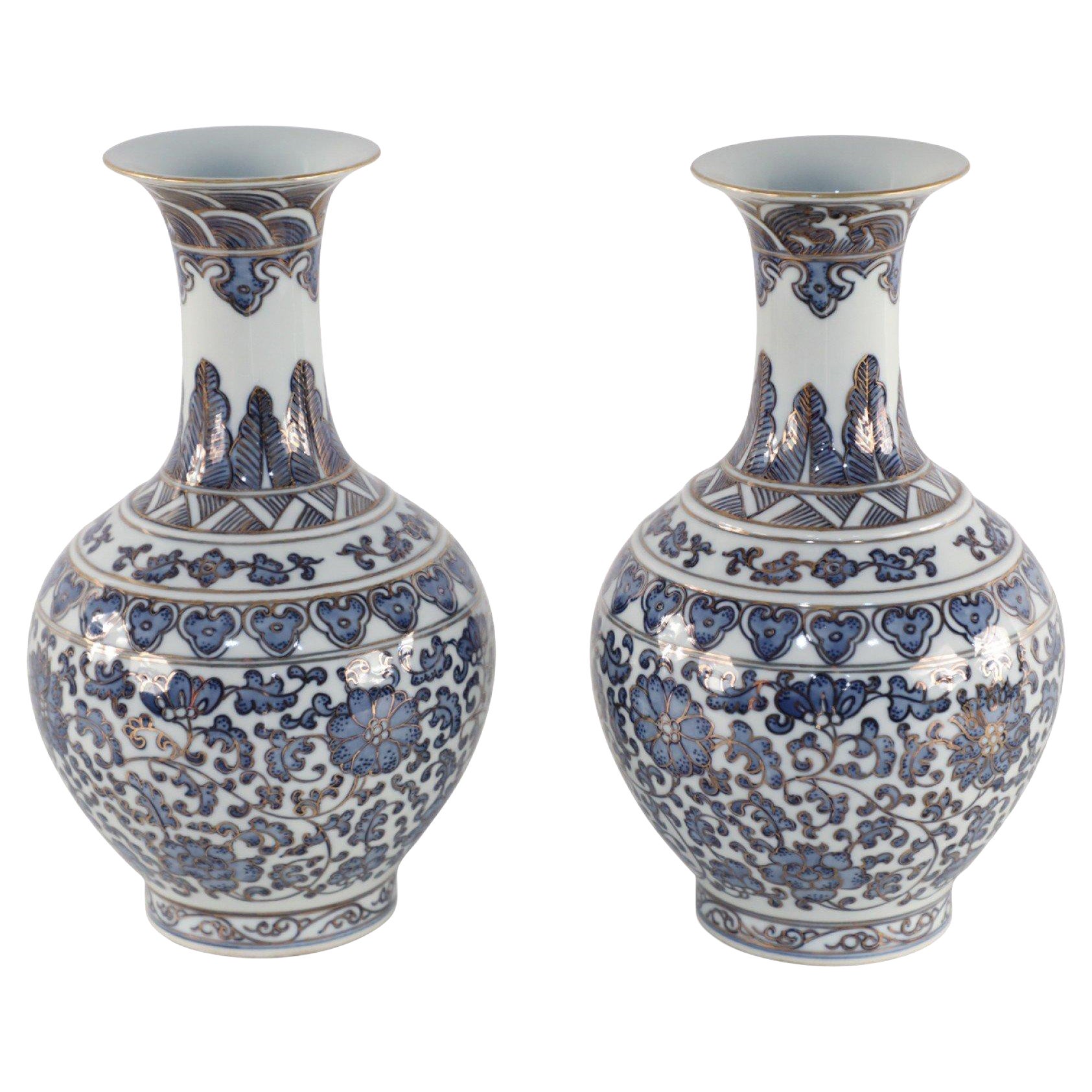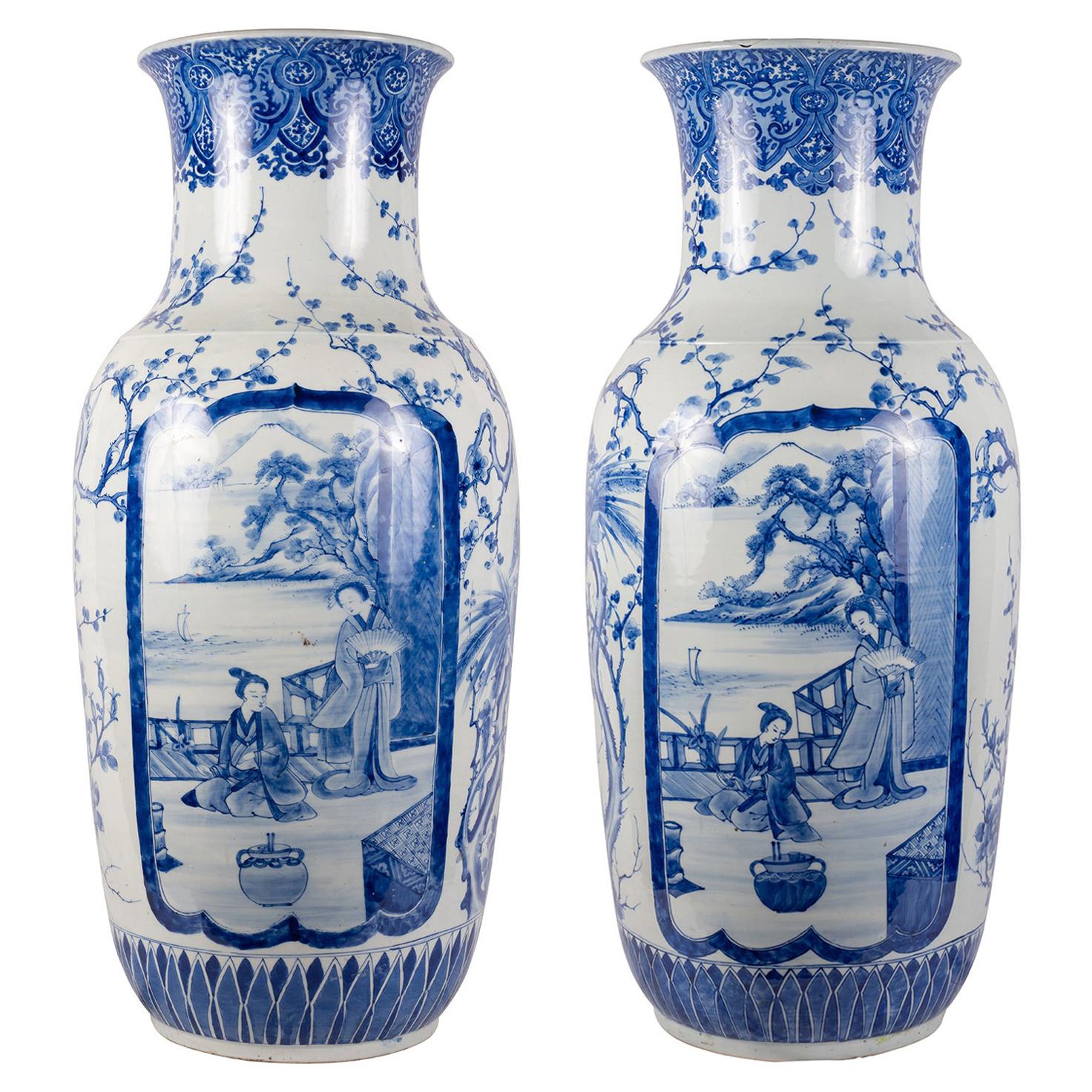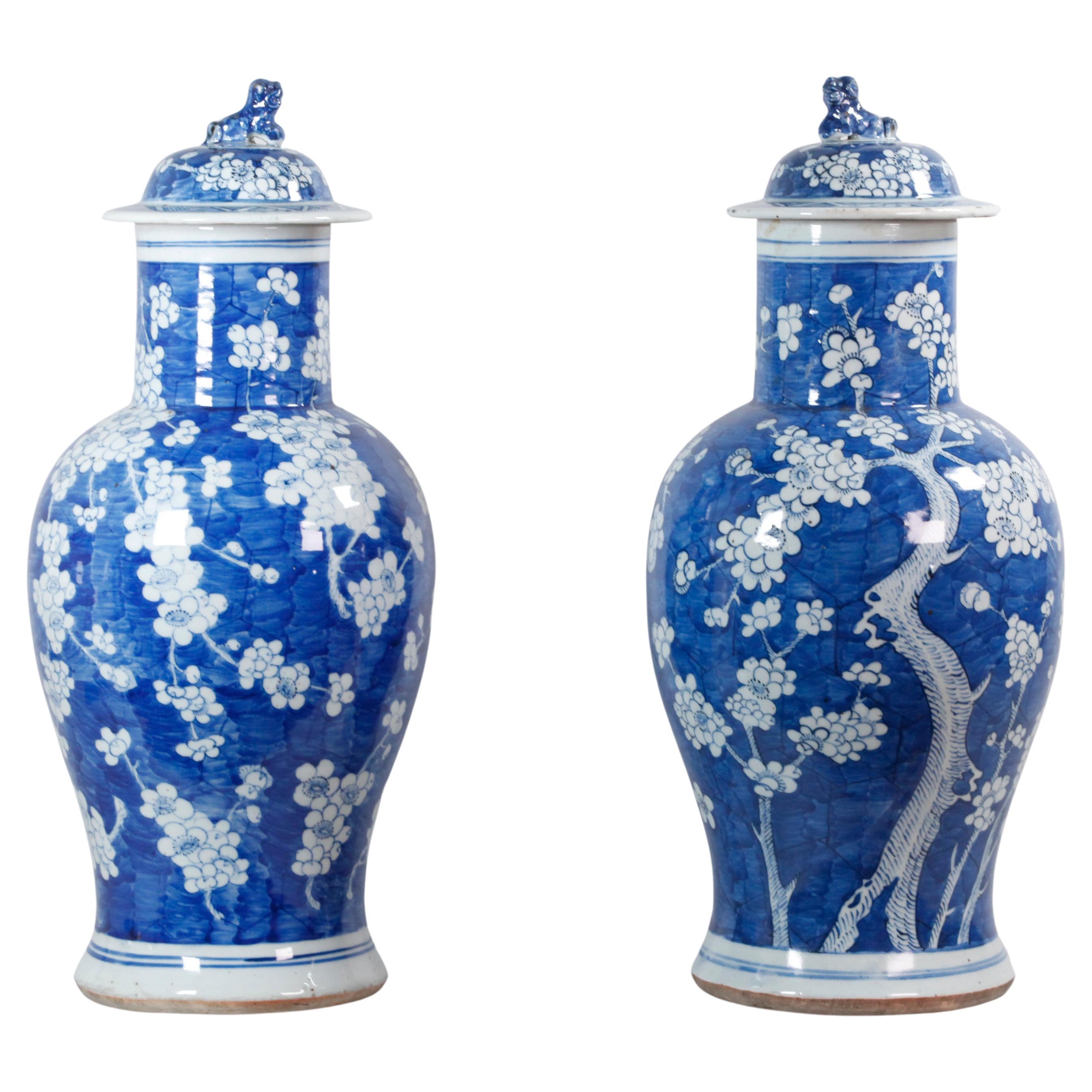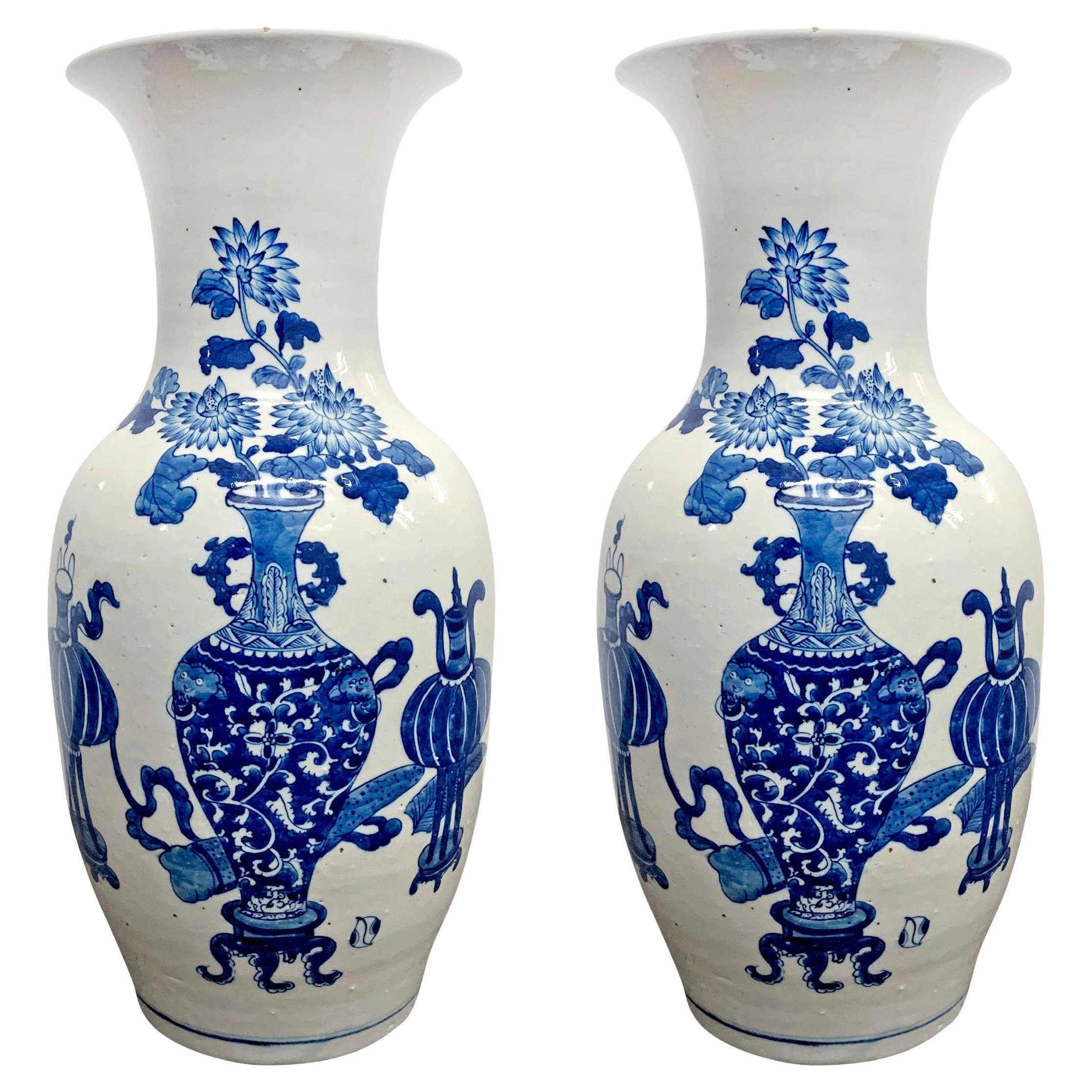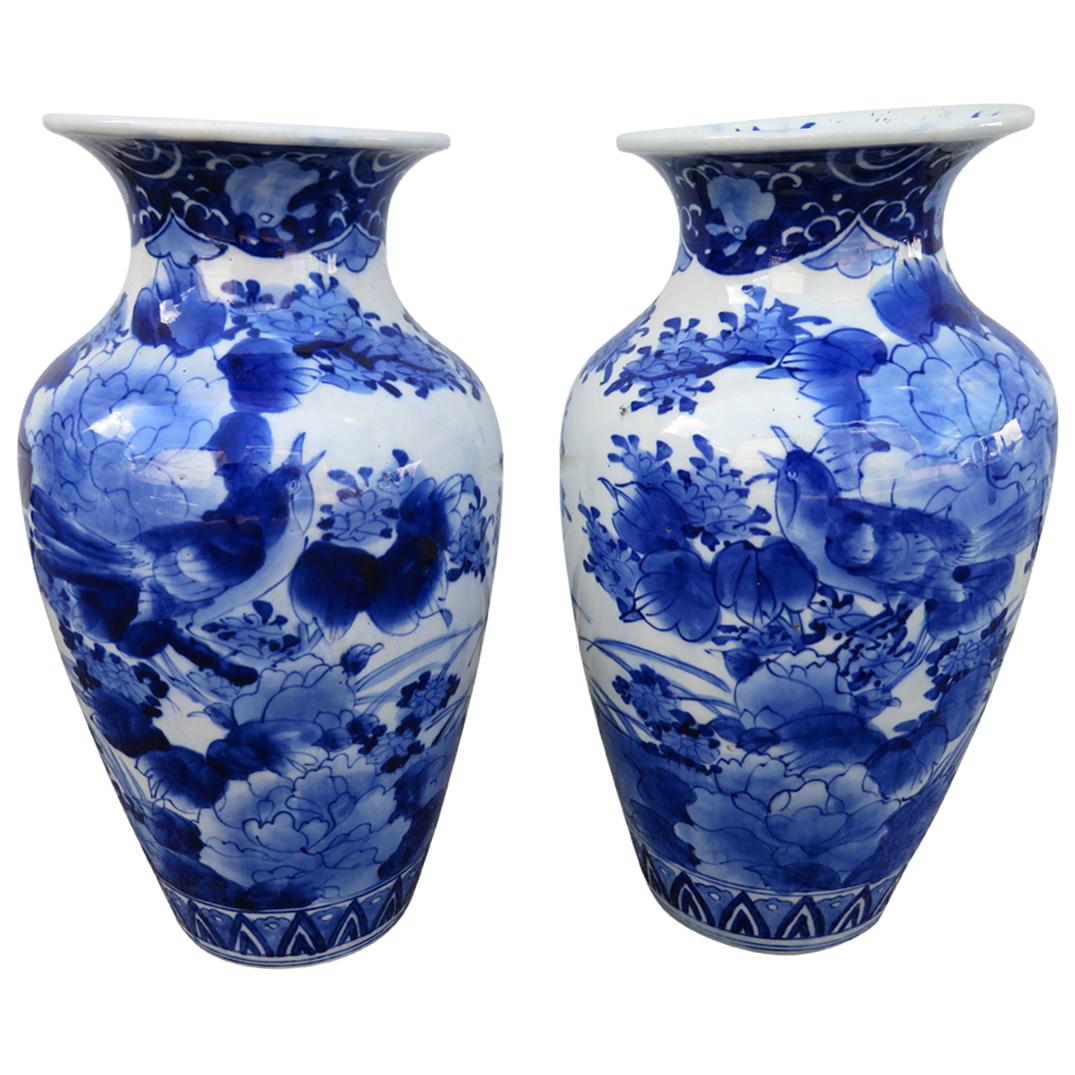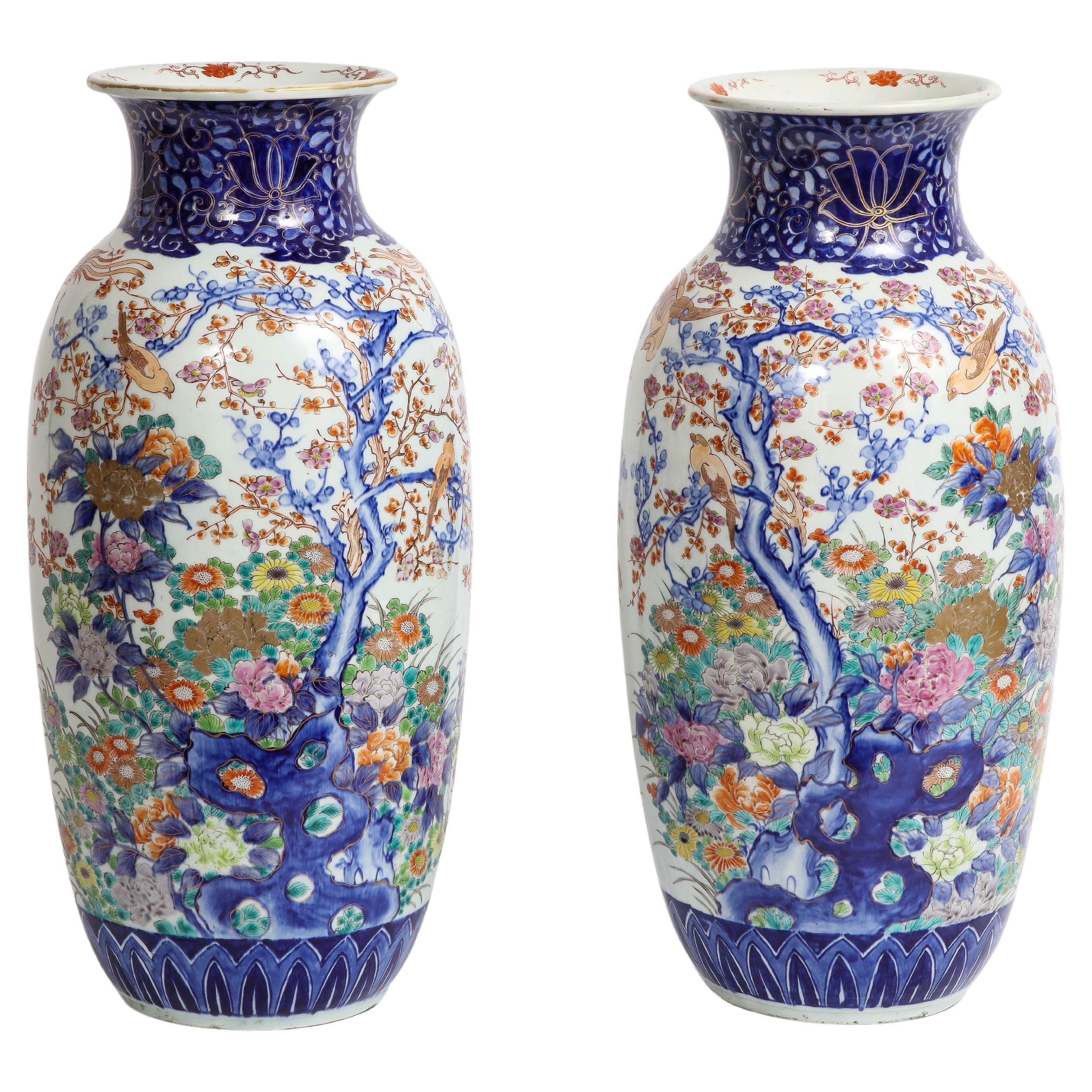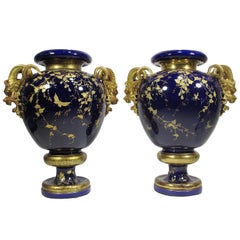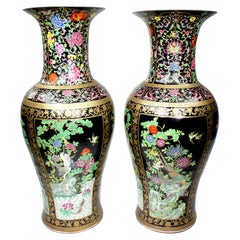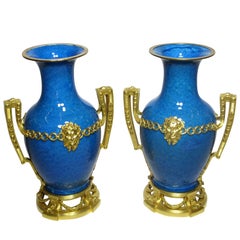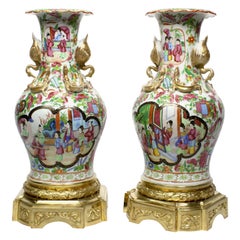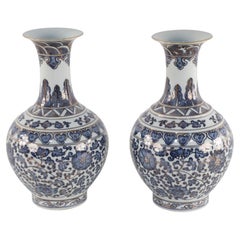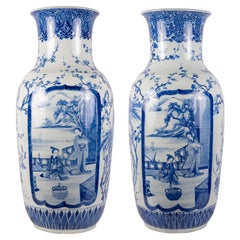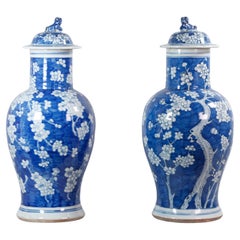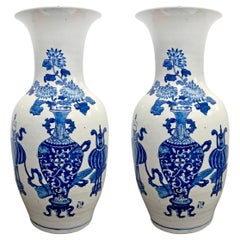Items Similar to Impressive Pair 19th Century Japanese Meiji Period Export Blue Porcelain Vases
Want more images or videos?
Request additional images or videos from the seller
1 of 21
Impressive Pair 19th Century Japanese Meiji Period Export Blue Porcelain Vases
$24,950per set
$48,950per set49% Off
£18,844.14per set
£36,970.78per set49% Off
€21,778.26per set
€42,727.29per set49% Off
CA$34,996.19per set
CA$68,659.86per set49% Off
A$38,919.16per set
A$76,356.42per set49% Off
CHF 20,372.38per set
CHF 39,969.06per set49% Off
MX$474,766.36per set
MX$931,455.45per set49% Off
NOK 255,986.40per set
NOK 502,225.83per set49% Off
SEK 240,788.26per set
SEK 472,408.23per set49% Off
DKK 162,560.58per set
DKK 318,931.47per set49% Off
About the Item
A Large and Impressive 19th Century Pair of Japanese Meiji Period Export Blue-Celeste, White and Porcelain Vases. The ornately decorated bottle-shaped celadon vases, each with feline decorations amongst tree-branches and parcel-gilt and ruby-red painted flowers. The bottom of one signed in Japanese “Dai Nihon Sagaken Arita Nakajima sei” which means 'Made by Nakajima in Arita, Saga Prefecture of Great Japan.'. Circa: 1880-1890.
One vase bearing an original label from the British firm 'F.B. Daniell & Son, (1827-1970 or later) at No.32, Cranbourn Street, Leicester Square, London, WC2. Originally F.B.Daniell, later F.B.Daniell and Sons. Another son was F.C. Daniell, who was running the shop by 1917. Dealt in a wide range of works, including stipples, portraits, and books, decorative items arranged by subject; but the main business was in 18c & 19c British and French mezzotints, stipples, and colour prints. According to Dudley Snelgrove, in later years the shop was managed by Hugh Tregaskis. The firm is thought to have closed in the 1970s. Literature from The British Museum.
Note: One vase has had restorations to the top and neck. (Please view all images)
Height: 53 1/2 inches (135.9 cm)
Width at center: 18 inches (45.7 cm)
Width at top: 19 1/2 inches (49.5 cm)
- Dimensions:Height: 53.5 in (135.89 cm)Diameter: 19.5 in (49.53 cm)
- Sold As:Set of 2
- Style:Meiji (Of the Period)
- Materials and Techniques:
- Place of Origin:
- Period:
- Date of Manufacture:Circa: Japan, 1880-1890
- Condition:Repaired: One vase has old restorations on the top and neck, touch-ups and with staples and glue exposure visible. The other vase is in good shape with minor wear/losses. Wear consistent with age and use. Minor losses. Minor fading. A really stunning pair and very decorative pair of vases. One vase has old restorations on the top and neck, touch-ups and with staples and glue exposure visible. The other vase is in good shape with wear/losses. Please view all images. SOLD 'AS IS'.
- Seller Location:Los Angeles, CA
- Reference Number:Seller: Ref.: A2775 - Lot 77051stDibs: LU1796239841972
About the Seller
5.0
Vetted Professional Seller
Every seller passes strict standards for authenticity and reliability
Established in 1982
1stDibs seller since 2016
135 sales on 1stDibs
Typical response time: 1 hour
- ShippingRetrieving quote...Shipping from: Los Angeles, CA
- Return Policy
Authenticity Guarantee
In the unlikely event there’s an issue with an item’s authenticity, contact us within 1 year for a full refund. DetailsMoney-Back Guarantee
If your item is not as described, is damaged in transit, or does not arrive, contact us within 7 days for a full refund. Details24-Hour Cancellation
You have a 24-hour grace period in which to reconsider your purchase, with no questions asked.Vetted Professional Sellers
Our world-class sellers must adhere to strict standards for service and quality, maintaining the integrity of our listings.Price-Match Guarantee
If you find that a seller listed the same item for a lower price elsewhere, we’ll match it.Trusted Global Delivery
Our best-in-class carrier network provides specialized shipping options worldwide, including custom delivery.More From This Seller
View AllFine Pair of 19th Century Cobalt-Blue and Parcel-Gilt Majolica Figural Vases
By Minton
Located in Los Angeles, CA
A very fine pair of 19th century cobalt-blue and parcel-gilt majolica figural vases, with figures of satyrs and gilt decorations of flowers and butterflies. Probably English, circa 1...
Category
Antique 19th Century British Other Vases
Materials
Ceramic
$19,850 Sale Price / set
43% Off
A Pair of Tall Chinese Export Porcelain Figural Vases with Birds and Flowers
Located in Los Angeles, CA
A Pair of Tall Chinese export porcelain figural vases. The ovoid porcelain bodies decorated with colorful flowers, tropical birds, tree...
Category
Late 20th Century Chinese Chinese Export Porcelain
Materials
Porcelain
Pair French/Chinese 19th Century Louis XVI Style Ormolu-Mounted Porcelain Vases
Located in Los Angeles, CA
A very fine and impressive pair of French 19th century Louis XVI style ormolu-mounted blue-glazed enamel over bronze vases with allegorical masks, rings and wreaths. The porcelain is...
Category
Antique 19th Century French Louis XVI Vases
Materials
Bronze, Ormolu
$24,950 Sale Price / set
49% Off
Pair Louis XVI Style Chinese-Export Ormolu Mounted Famille Rose Porcelain Vases
Located in Los Angeles, CA
A fine pair of Louis XVI style chinoiserie gilt-bronze mounted Chinese export famille rose porcelain vases. The ovoid hand painted porcelain body with dual scenes of a sword presenta...
Category
Antique Early 1900s Chinese Chinese Export Vases
Materials
Ormolu
$6,338 Sale Price / set
24% Off
Pair of English 19th Century Turquoise Ground Painted Porcelain Vases by Minton
By Minton, Edouard Rischgitz
Located in Los Angeles, CA
A fine pair of English 19th century turquoise ground and parcel-gilt painted porcelain vases, urns by Minton. The tapered shaped urns raised on a slender stem with turquoise grounds ...
Category
Antique 19th Century English Romantic Vases
Materials
Porcelain
$3,450 Sale Price / set
22% Off
Fine Pair of 19th Century Ormolu-Mounted Chinese Porcelain Vases Oil Lamps
Located in Los Angeles, CA
A fine pair of Chinese Export, 19th century porcelain bottle vases mounted with French ormolu as oil lamps. The well potted ovoid light pale-green porcelain pear...
Category
Antique 19th Century Chinese Chinese Export Table Lamps
Materials
Ormolu
$7,895 Sale Price / set
39% Off
You May Also Like
Pair of Chinese Qing Dynasty Style Blue and White Gold-Lined Porcelain Vases
Located in Queens, NY
PAIR of Chinese Qing Dynasty Qianlong Period-style (Mid-20th Century) globular, white porcelain vases with blue scroll and floral designs accented by gold line work. (mark on bottoms...
Category
Mid-20th Century Chinese Qing Vases
Materials
Porcelain
Large Pair 19th Century Japanese Blue and White Vases
Located in Brighton, Sussex
A very impressive pair of Japanese Meiji (1868-1912) period Blue and white porcelain vases, each with wonderful classical motif decoration to the neck and base. Blossom trees to the ...
Category
Antique Late 19th Century Japanese Japonisme Vases
Materials
Porcelain
Pair of Chinese Blue & White Porcelain Cover Vases, 19th Century
Located in New York, NY
cherry blossom motif
Category
Antique Mid-19th Century Chinese Antiquities
Materials
Porcelain
Pair of 19th Century Chinese Blue and White Vases
Located in Chicago, IL
A pair of 19th century Chinese blue and white vases each hand-painted with various scholar's objects including vases filled with chrysanthemums, and flanked by pairs of incense burne...
Category
Antique 19th Century Chinese Chinoiserie Vases
Materials
Porcelain
Lovely Matching Pair of Porcelain Blue and White Oriental Vases
Located in Pemberton, NJ
Lovely matching pair of porcelain blue and white oriental vases. This pair date from the mid-century and are in very nice vintage condition.
Category
Vintage 1950s Chinese Chinoiserie Vases
Materials
Porcelain
A Large Pair of 19th Century Meji Period Japanese Imari Porcelain Vases
Located in New York, NY
Matching Large Japanese Imari Porcelain Vases. 1880 Meiji period.
Introducing an exquisite pair of Japanese Imari porcelain vases from the Meiji period, circa 1880. Standing tall at...
Category
Antique 19th Century Vases
Materials
Gold
More Ways To Browse
Signed Japanese Porcelain Vase
Japanese Export Porcelain
Blue White Porcelain Square
18c Painted Furniture
Japanese Shop Sign
Celeste Blue
Antique Ruby Vase
Antique Japanese Bottles
Celadon Blue Vase
French Portrait Vases
Pair Of Portrait Vases
Large Celadon Vase
Japanese Celadon
Pair Celadon Vases
Porcelain Street Sign
Signed Celadon Vase
Meiji Books
Japanese Celadon Vase
